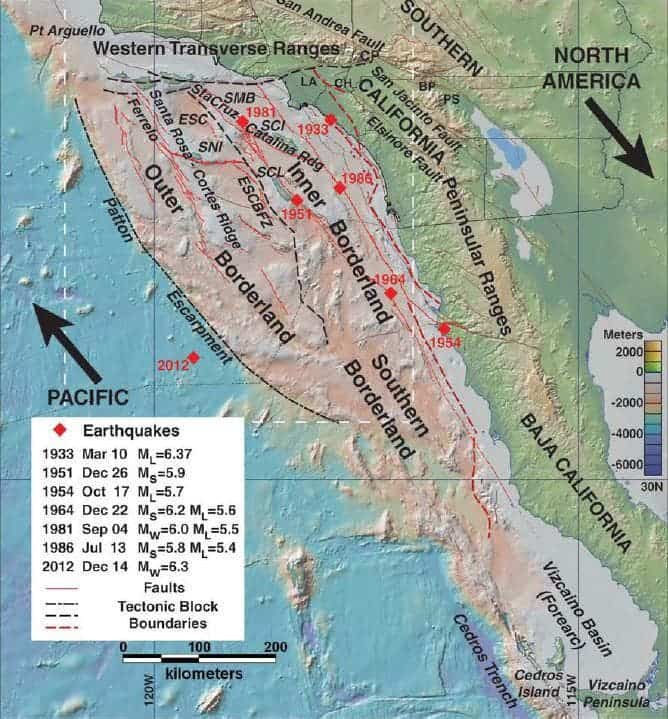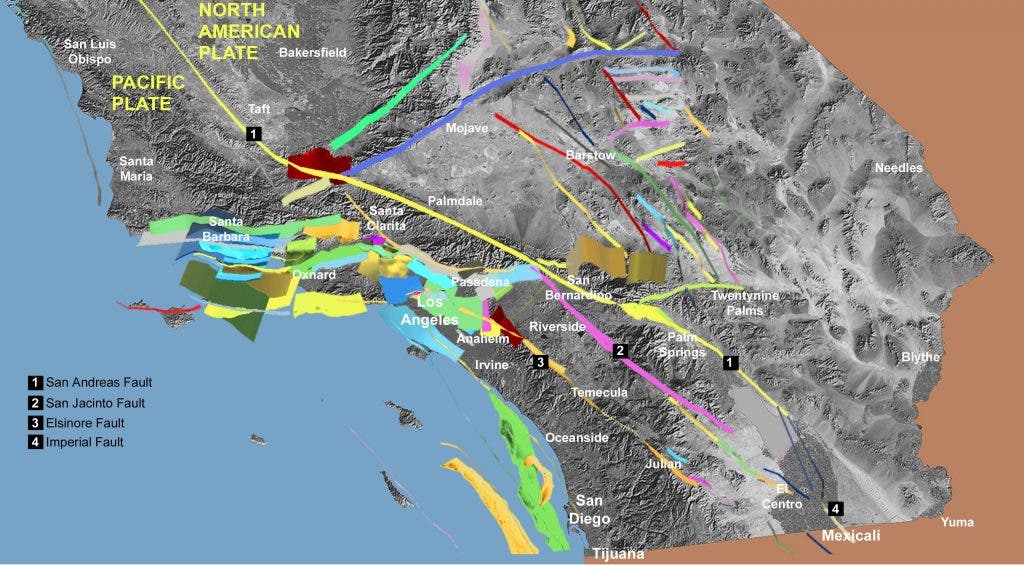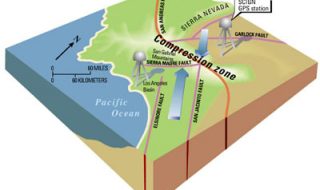It’s not just the San Andreas fault – a new study published in the Journal of Geophysical Research reports that there are several long faults on the U.S. West coast which can cause significant earthquakes, as well as tsunamis.

This map shows the California Borderland and its major tectonic features, as well as the locations of earthquakes greater than Magnitude 5.5. The dashed box shows the area of the new study. Large arrows show relative plate motion for the Pacific-North America fault boundary. Mark Legg
“There are many active faults offshore southern California which could produce greater then magnitude 7 quakes and tsunamis,” Mark Legg, who runs a Southern California consulting firm called Legg Geophysical and is the lead author of the study, said.
Geologists gave a collective criticism to the big-budget San Andreas movie, labeling it as a “classic” disaster movie with little science behind it. But that doesn’t mean that California isn’t threatened by seismic activity; the San Andreas area is way overdue for a major earthquake, and it’s likely gonna be big. The surveys of the region show a “complicated logjam” of faults produced by the movement of the Pacific Plate, sliding in relative motion to the North American Plate.
“What they were searching for are signs, like those seen along the San Andreas, that indicate how much the faults have slipped over time and whether some of that slippage caused some of the seafloor to thrust upwards,” the American Geophysical Union, which publishes the journal, said, in a press release.

Larger imageSCEC Community Fault Model. This map shows the 3-dimensional structure of major faults beneath Southern California. Image via Earthquake Country.
Legg said that while most geophysical studies (and movies) focus on the inland San Andreas fault, offshore faults still hold a great potential for damage. A geological fault is a planar fracture or discontinuity in a volume of rock, accompanied by major displacement. Most major faults emerge at areas of tectonic pressure, usually at the edge of tectonic plates. He and his colleagues gathered seafloor bathymetry data which revealed that two of the largest faults (the Santa Cruz-Catalina Ridge Fault and the Ferrelo Fault) have advanced in recent decades and are now connected to the smaller faults in the Borderland. Connected faults can be a major problem because they cause a domino-like effect, where movements on one fault trigger further movement and displacement on other faults.
A schematic block model of Southern California showing the motion of the Pacific and North American plates, and the big bend of the San Andreas fault where the plates squeeze together. Image via Earthquake Nation.
“The more connected the faults are, the more they can cause larger earthquakes,” said Paul Umhoefer, a geologist at Northern Arizona University. “The more detailed data that was gathered in this study is important for judging whether there is an earthquake and tsunami hazard.”
The good news is that even if a tsunami emerges, it won’t be as large as tsunamis generally get in subduction areas. Most tsunamis are caused by earthquakes generated in a subduction zone, an area where an oceanic plate is being forced down into the mantle by plate tectonic forces. But even if a 2 meter tsunami is generated, it could cause massive damage on the coast.
Legg also warned that we can’t even understand what damage a potential tsunami might cause, because we don’t have enough bathymetry data on the U.S. West coast.
“We’ve got high resolution maps of the surface of Mars,” Legg said, in a statement. “Yet we still don’t have decent bathymetry for our own backyard.”










